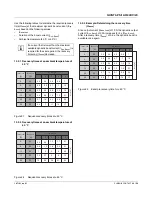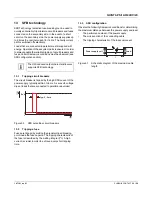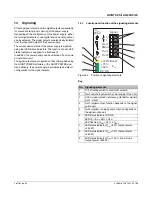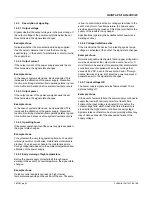
QUINT4-PS/1AC/24DC/20
107101_en_01
PHOENIX CONTACT
46 / 50
15.2.1 Redundancy operation
Redundant circuits are suitable for supplying systems and
system parts which place particularly high demands on
operational reliability.
If energy is to be supplied to the load with 1+1 redundancy,
two power supplies of the same type and performance class
must be used. In the event of an error, it must be ensured
that one of the power supplies is able to provide the total
required power for the load. This means that in redundancy
mode, two 20
A power supplies supply a load with a nominal
current of 20 A, for
example. During normal operation of the
power supplies, each power supply therefore supplies 10
A.
Always use cables with the same cross sections and lengths
when wiring the power supplies on the DC output side.
Redundancy modules can be used to 100%
decouple two
power supplies from one another and to ensure the supply.
A distinction is made here between passive and active
redundancy modules. Optimum decoupling with
simultaneous monitoring and minimal power dissipation can
be achieved with the QUINT
ORING or QUINT
S-ORING
active redundancy module.
Figure 46
Schematic diagram, redundant operation with
QUINT
ORING
Figure 47
Schematic diagram, redundant operation with
QUINT S-ORING
Certain specifications apply in redundancy operation with
regard to the configuration of the keepout areas. In
redundancy operation, the power supplies are operated with
maximum half the nominal power. The keepout areas are
therefore reduced.
Using the signaling settings, you can monitor whether both
power supplies are being operated with
≤
half the nominal
load. In the case of system extension, an overload is
prevented if one of the power supplies fails.
15.2.2 Increased power
When n power supplies are connected in parallel, the output
current is increased to n x I
N
. Parallel connection for
increased power is used when extending existing systems.
If the individual power supply does not cover the current
consumption of the most powerful load, parallel connection
of power supplies is recommended.
Figure 48
Schematic diagram of increased performance
+
I
N
−
+
I
N
−
+
+
−
−
Σ
= I
N
+
I
N
−
+
I
N
−
+
−
Σ
= I
N
When three or more power supplies are
connected in parallel, each output must be
protected separately, e.g.,
by a circuit
breaker, fuse or decoupling module such as
QUINT
ORING, QUINT S-ORING or
QUINT
DIODE.
+ –
I
N
+ –
I
N
+
–
+ –
I
Σ
= 2 x I
N





































